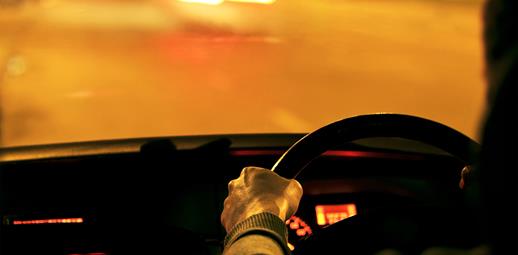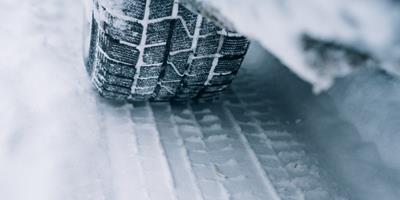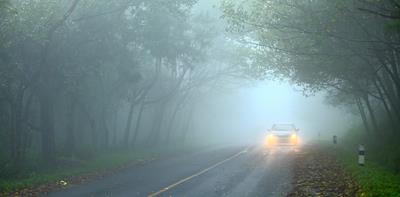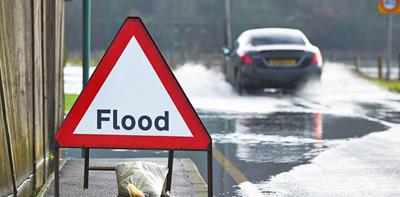
Driving at night can feel very different to getting behind the wheel during the day. If you get nervous driving in the dark, read our tips so you can feel more confident behind the wheel when the sun goes down.
Easy as hack
Setting off a bit earlier can help ease nervousness when driving at night and means you can take things slowly.
At a glance
- Working lights and clean windscreens will give you the clearest view of the road at night
- Be cautious when driving in the dark by driving more slowly, paying attention to the surface of the road and looking out for pedestrians and animals
- The best night-time drivers set off earlier, use headlights in a way that doesn’t dazzle other drivers and pack breakdown essentials
what are the challenges of night driving?
Challenges of night driving include:
- Reduced visibility: The low light can make it much more difficult to drive, especially if there are no lampposts or cats eyes on the road.
- Common hazards: Glare from other drivers’ headlights, tiredness and unexpected conditions can all add to the challenges of driving at night.
- Increased risk of accidents: The low visibility and increase in hazards make the chances of being involved in an accident higher.
tips for driving safely at night
There are lots of extra factors to consider when driving at night, so make sure you’re as safe as possible while on your journey.
check your vehicle before you leave
Before you drive anywhere check your:
- Wiper fluid: a clean windscreen produces less glare from oncoming headlights, so it’s best to keep your wiper fluid topped up
- Lights: Check that all your exterior lights are working before setting off. This includes indicators, reverse lights and headlights.
- Tyres: Your tyres should have a minimum of 1.6mm tread depth.
check your lights
When it comes to driving in the dark, a fully functioning set of lights are your best friend. You’ll need to check that all the following work:
- Side lights
- Headlights (main and dipped beams)
- Fog lights
- Indicators (left and right, front and back)
- Brake lights
- Reverse lights
- Hazard lights
If any of these lights aren’t working, you should get them fixed before hitting the road. If you’re not confident about doing this yourself, you can always ask for the help of a professional.
use your lights correctly
We’ve already covered the importance of making sure your lights work, but it’s equally important to use them properly.
Rule 113 of The Highway Code says you should use your headlights half an hour after sunset and half an hour before sunrise. Rule 114 of the Highway Code says they should be used in a way which doesn’t dazzle other drivers, so dipped headlights are usually best for town and city driving.
On winding country lanes using your full beam can give you a better idea of what’s ahead. Be sure to dim your lights if you come across other vehicles to make sure you don’t dazzle the driver.
When it comes to using your fog lights, don’t be tempted to turn them on unless you really need them. When is that? If visibility falls to 100 metres or less (roughly the length of a football pitch), it’s time to hit the switch.
keep your windows and mirrors clean
Dirt, frost and snow can impair your view of the road during daylight hours. If you allow them to stay on your windows and mirrors when driving in the dark, you might notice that your view of the road is even more affected.
Make sure you clean all mirrors and windows (inside and out) using the right products. That way, you’ll remove dirt, frost and snow without leaving smears on the glass that might cause lights to dazzle you.
You should know how to demist your windows too. Familiarise yourself with the window heater settings and turn on the air con. The temperature controls aren’t just for summer and will help to remove moisture from the inside of your car.
And remember, if there are any scratches or chips on your windscreen, these can make the dazzle from streetlights and other vehicles worse. So get your windscreen repaired by a professional before you hit the road.
make sure you have enough fuel or charge level
Make sure you have enough fuel or charge to get you to your destination. If you can’t make it in one go, plan ahead of time where you’re going to stop to refuel.
get your eyes tested
If you are having issues driving at night, particularly when it comes to clearly reading road signs, it’s a good idea to get your eyes tested.
If you wear glasses, you might want to speak to your optician about whether an anti-reflection coating on your lenses will help.
avoid fatigue
It’s important to stay alert when driving in the dark. Tired drivers are a serious risk on the road and fatigue contributes to 4% of fatal road crashes in Britain.[1] Because it’s so difficult to spot, the true figure could be much higher.
Rule 91 of The Highway Code recommends you take a break of at least 15 minutes after every two hours of driving. But it’s not just mid-journey breaks that matter but getting enough sleep before you set off, too. Research from Brake shows that the most common times for people to fall asleep at the wheel are early morning (2am - 6am), or early afternoon (2pm - 4pm).[2]
If your eyelids are feeling heavy, make sure you plan a pit stop to stretch your legs and get some fresh air. Caffeine helps and sharing your driving with another driver is a great idea from The Royal Society for the Prevention of Accidents. However, it should not be used as a continuous alternative to proper rest.
For more information, read: Driving when tired: What you should do and how to avoid it.
take your time
It can be tempting to drive faster on emptier night-time roads but with reduced visibility, it’s important to:
- Take things slowly
- Increase the distance between you and other cars
Your headlights offer a restricted amount of visibility so it’s important that you can stop safely within the distance you can see ahead of you. The best way to do this is by giving yourself as much time as possible to react to the road ahead and by always keeping at least two car lengths between you and the vehicle in front.
Don’t miss: Speeding: How much time do you really save?
watch out for children, cyclists and animals
Like everything else, people are trickier to spot while driving in the dark, especially if they’re wearing dark clothing. To help keep everybody safe, pay extra attention to pedestrian crossings and people stepping off the pavement when driving in towns and cities.
There are plenty of nocturnal animals that are more likely to run out in front of you at night. It’s important to stay alert for any foxes, deer or cats that might suddenly appear and follow our advice on how to drive safely if there are animals on the road.
pack breakdown essentials
If your car breaks down while driving in the dark, it’s handy to have a few essentials in your boot:
- A high-vis jacket
- A torch
- Spare batteries
- Reflective warning triangle
- Portable charger
- Empty fuel can
- Jump leads
- Warm clothes
- Blankets
- Ice scraper
- Water
- Snacks
check the surface of the road
Black ice and potholes can make driving during the day tricky, and navigating the same hazardous road surfaces at night is even more of a challenge. That’s why it’s important to pay extra attention to the road in low-light conditions and especially during winter.
If you’re driving an unfamiliar route, it's also worth keeping your eye on road markings that might be less visible when the sun goes down. Being aware of the road markings won’t just help you stay safe but could help you avoid being issued with a fine.
Sometimes hitting a pothole is unavoidable. If you find your car damaged by an uneven road surface try following our advice on how to claim for pothole damage.
keep a safe distance from cars
Night driving increases the stopping distance you need. Because it’s dark, you have less time to react to hazards on the road, so you should always keep a bigger distance between you and the car in front than you would when driving in the daytime.
park somewhere safe
When parking in the dark, or around half an hour before sunset or after sunrise, stay safe by following a few key rules.
You should always park in the direction of traffic unless you're in a recognised parking space (Highway Code Rule 248). If you're on a road with a speed limit over 30 mph or if it's foggy, switch on your sidelights (Rules 249 and 251). Look for the symbol with two semi-circles shapes emitting light beams.
how to see better and reduce glare when driving in the dark
It’s very easy to reduce the glare you get from other drivers’ headlights when you’re driving at night.
- Use night mode: Did you know your rearview mirror may have a night mode? Just flick the lever at the bottom and it will angle your mirror, so it doesn’t directly reflect headlights
- Keep your windows clean: Having clean windows and mirrors can also help reduce glare
- Adjust your interior lighting: Sometimes, if the lights inside your car are too bright, it can affect how well you can see outside your car.
what should you do if you break down at night?
If you break down at night, you’ll need to follow essentially the same steps as you would if you break down in the daytime:
- Turn on your hazard lights
- Pull over to a safe space if you can
- Leave your car via the passenger door
- Phone for assistance using your mobile phone or a roadside telephone
can driving at night affect your car insurance?
Driving at night can affect your car insurance if you have a telematic device installed. Night driving is considered inherently more dangerous than driving during the day due to the increased likelihood of animals on the road, tiredness and drunk drivers. If you drive at night regularly this could put your insurance price up.
FAQS
can learner drivers drive in the dark?
They can, but they should be cautious when doing so due to the increased risk. If you’re a learner driver and decide to practise driving in the dark, make sure you have the right insurance and a qualified driver with you.
can you get glasses for driving in the dark?
Yes. You can get anti-glare glasses for driving in the dark
how can i prepare for a long drive at night?
It’s important to prepare before going on a long drive, especially at night.
- Do your regular car maintenance checks
- Find your breakdown service’s number
- Pack an emergency kit
- Plan your route
- Understand what all your lights do
- Make sure you have enough fuel
how can i overcome a fear of night driving?
There are several ways you can overcome a fear of night driving. Practising in your local area, on roads you know well, is a great way to start. You can also start small – just drive to the end of the road and back to get used to the feeling of driving in the dark.
You can also book nighttime driving lessons. Not only will you get the experience, but there will also be a professional there to help guide you.
when should i use high beams and low beams?
You should use your high beams when you’re driving at night in a poorly lit area, and there are no oncoming cars.
You should always have your low beams on at a minimum when driving at night.
Sources
[1] brake.org.uk
[2] brake.org.uk


